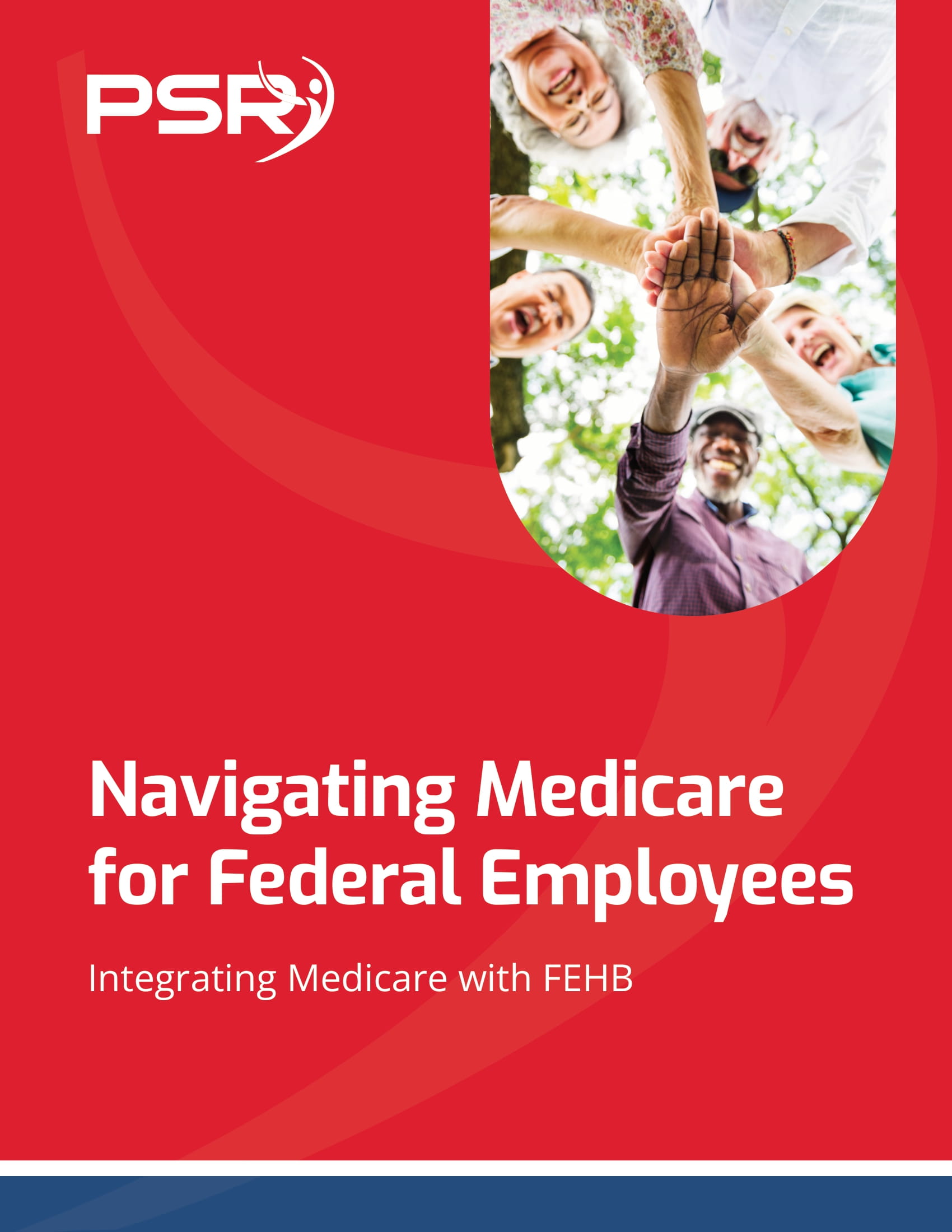Key Takeaways:
- Plan Early: Understanding Social Security in the context of your federal benefits can significantly impact your retirement timeline and income strategy.
- Maximize Your Benefits: Coordinating Social Security with your federal retirement plan can help you get the most out of both.
Understanding How Social Security Complements Your Federal Retirement
Planning for retirement as a federal employee means balancing unique benefits with Social Security for a strong financial foundation. You’ve contributed to Social Security throughout your career, and knowing how to integrate it into your retirement strategy can help you maximize lifetime benefits
- Also Read: Are You Eligible for the Federal Employee Retirement System (FERS)? Find Out Here
- Also Read: Why TSP Withdrawal Options Might Be More Flexible Than You Think for Federal Retirees
- Also Read: The Top Federal Employee Benefits You Should Be Tapping Into Right Now
What’s in Your Retirement Package as a Federal Employee?
As a federal employee, your retirement benefits package can feel substantial, especially compared to the private sector. Most federal employees are part of the Federal Employees Retirement System (FERS), which includes:
- FERS Basic Annuity: This is a defined benefit pension plan that offers a monthly income based on your years of service, your highest-earning years, and a percentage factor.
- Social Security: FERS employees contribute to Social Security, so you’re eligible to receive these benefits based on your earnings record.
- Thrift Savings Plan (TSP): Your TSP account is a valuable source of retirement income, working as a defined contribution plan similar to a 401(k) in the private sector.
Each of these elements serves a specific role in your retirement plan, with Social Security acting as an important foundation you can layer with the FERS annuity and your TSP savings.
Understanding When You Can Start Social Security
While you’re eligible for Social Security at age 62, deciding when to start collecting requires some thought. The age you choose to start Social Security affects your monthly benefit:
- Early Retirement (Age 62): This option reduces your monthly benefit, which could be up to 30% less than what you’d receive if you waited until your full retirement age.
- Full Retirement Age (FRA): Depending on your birth year, FRA ranges from 66 to 67. Starting at this age means you receive 100% of your calculated benefits.
- Delayed Retirement (up to Age 70): Waiting to start benefits beyond FRA can increase your monthly payout by 8% for each year you delay, up to age 70.
If you’re still working when you reach 62, remember that Social Security imposes an earnings limit on those who start collecting before FRA. The limit for 2024 is $22,320, and for every $2 you earn above this, your Social Security benefits will be reduced by $1. This reduction is only temporary, however, as your benefits will be recalculated once you reach full retirement age.
FERS Supplement for Early Retirees
For federal employees who retire before Social Security eligibility, FERS includes a bridge benefit known as the FERS Special Retirement Supplement. This supplement is designed to “fill the gap” between your early retirement and when you become eligible for Social Security. The FERS supplement is calculated to approximate what you would receive from Social Security if you were eligible at that time and usually lasts until you reach age 62.
The FERS supplement amount is based on your federal earnings history, but it’s not a dollar-for-dollar match with Social Security. It’s a valuable tool if you’re planning an early retirement, as it helps maintain steady income until you can collect Social Security.
How the Windfall Elimination Provision (WEP) Affects CSRS Employees
If you’re under the older Civil Service Retirement System (CSRS) rather than FERS, the Windfall Elimination Provision (WEP) might impact your Social Security benefits. The WEP reduces Social Security benefits for those who also receive a pension from employment not covered by Social Security (such as CSRS employment). This doesn’t completely eliminate your Social Security, but it may reduce the amount you’d otherwise receive.
The amount of the reduction depends on factors like your years of substantial earnings covered by Social Security, but it’s capped. CSRS employees planning to draw Social Security alongside their pension should be aware of WEP, as it can affect your long-term income planning.
Strategizing Social Security and FERS Together
When you retire, your FERS annuity will provide steady monthly income, but Social Security can enhance that. Some federal employees take Social Security at 62 while others delay until their full retirement age or beyond to increase their benefits. Which choice is best? It largely depends on your personal and financial situation.
Consider the following when coordinating Social Security and your FERS annuity:
- Income Needs: If you need more income immediately, starting Social Security early could make sense, even if it means a reduced benefit.
- Health and Longevity: If you expect a long retirement, delaying Social Security could yield more cumulative income.
- Spousal Benefits: Social Security also provides spousal benefits. If you’re married, you may want to coordinate with your spouse to maximize household income.
- Tax Implications: Social Security benefits are partially taxable if your income exceeds certain limits. Your FERS annuity, TSP withdrawals, and Social Security could lead to tax considerations that influence when to start benefits.
Leveraging the Thrift Savings Plan (TSP) for Retirement Flexibility
Your TSP offers flexibility and can be a buffer as you decide when to start Social Security. If you choose to delay Social Security for a higher monthly benefit, TSP withdrawals can fill any income gaps. Here are a few tips for making the most of your TSP in conjunction with Social Security:
- Avoid Early Withdrawals: To avoid penalties, it’s generally best not to withdraw TSP funds before age 59½.
- Consider Required Minimum Distributions (RMDs): Once you reach age 73, you’re required to start taking minimum distributions from your TSP. This income could impact your tax rate and Social Security benefit taxation.
- Plan Withdrawal Rates Carefully: To ensure your TSP lasts through retirement, many financial advisors recommend an annual withdrawal rate of around 4%. This can provide consistent income while allowing your TSP to grow.
Deciding the Best Age to Start Collecting Social Security
The decision about when to take Social Security is personal. But generally, if you’re able to cover your expenses with your FERS annuity and TSP for a few extra years, waiting until full retirement age, or even 70, might give you more financial security.
Some federal retirees choose to start Social Security early and invest the payments, while others wait and enjoy higher monthly income. Each approach has pros and cons, and often it’s a matter of personal comfort with risk, investment preferences, and long-term financial goals.
Planning for the Long Term: How Social Security Fits In
For federal employees, Social Security isn’t the only piece of the puzzle, but it’s an essential one. It’s helpful to think of Social Security as a foundation you can build upon with other income sources. Here’s a quick recap of how Social Security fits into the larger retirement picture:
- The FERS Annuity: Provides a stable income stream.
- Social Security: Offers flexibility with when to start, impacting monthly benefit amounts.
- TSP: Grants flexibility in how much you withdraw, working well with both the FERS annuity and Social Security.
Balancing these three components is key to creating a retirement plan that supports your goals, lifestyle, and income needs.
Make Your Plan Work for You
Social Security is a powerful asset for federal retirees, but it’s just one part of a bigger plan. By understanding your benefits and making informed decisions about when to start Social Security, you can create a plan that provides reliable income and financial freedom throughout retirement. Take the time to review your benefits, explore scenarios, and even consider consulting with a retirement planner who understands federal benefits. The right strategy can help you get the most out of what you’ve earned over your federal career, giving you confidence as you move toward retirement.









